#63 in Vietnam
Popular Bánh Giầy Variations

Bánh Giầy Đậu Xanh

Bánh Giầy Ngọt
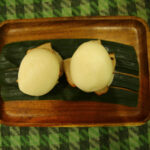
Bánh Giầy Giò
Bánh Giầy: Ingredients and Preparation
Main Ingredients
Main Cooking Method
Preparation Process
Bánh Giầy: A Deep Dive
Cultural Significance
Taste
Texture
Aroma
Color
Serving Style
Serving Temperature
Accompaniment
Occasions
Seasons
Special Diets
Calories
Popularity
Popular Similar Dishes
- Mochi
- Tteok
- Nian Gao
- Puto
Popular Dining Area
Bánh giầy (round sticky rice cake) is a traditional Vietnamese cake made from glutinous rice that is steamed or boiled and then finely pounded. It is a white, flat rice cake with a round shape, mirroring the shape and color of the sky according to Vietnamese beliefs.
Moreover, bánh giầy may include a filling (e.g., mung beans and coconut strands), offering either sweet or savory flavors.
The texture of the cake is tender, sticky, and chewy. Locals typically wrap it in banana leaves and enjoy it alongside other dishes or present it as part of ceremonial or festive celebrations.
In the following sections, you’ll expand your knowledge about bánh giầy’s fascinating history, which is also related to bánh chưng, another traditional Vietnamese rice cake.
Making bánh giầy is also worth a try. Moreover, the round rice cake is also available in different variations in Vietnam.
Next, there are other details about the benefits and downsides of consuming bánh giầy. Last but not least, check out other dishes around the world that share some similarities with this Vietnamese round sticky rice cake. Let’s jump in the reading now!
Key Points
Bánh Giầy Images
What Is the Origin of Bánh Giầy and Its Name?
The origin of bánh giầy is associated with the legend of Prince Lang Lieu and the ancient Hung Kings era. According to Vietnamese folklore, it was created to honor the sixth prince of Hùng King. The prince created the round cake to represent the sky, complementing the square bánh chưng, which symbolizes the Earth.
This legend emphasizes the cultural value of rice in Vietnam and the connection between nature and Vietnamese traditions. Over time, bánh giầy has become an essential food not just with the Hung Kings’ Festival but also with Tết, the Vietnamese Lunar New Year.
The name “bánh giầy” has evolved over time as well. Long ago, it was known as “bánh chì.” As the language changed, the “ch” in “chì” turned into “gi,” and the “i” became “ây,” making it “bánh giầy” as you know it today. Some people got mixed up with the word “dầy,” which means ‘thick,’ and started calling it “bánh dầy” by mistake.
As you just learned about bánh giầy history, I’ll show you how to create this traditional delicacy right in your home in the next part.
How to Make Bánh Giầy?
In Vietnam, locals normally make bánh giầy in 4 main steps, such as:
Step 1: Soak and Grind the Rice
Locals will soak glutinous rice overnight, then grind it into a smooth paste.
Step 2: Shaping Cakes
The paste will be formed into small, flat, and round cakes with or without a filling (based on region).
Step 3: Steaming Cakes
The cake will be steamed for around 8 to 10 minutes until soft and opaque white color.
Step 4: Covering Cakes With Banana Leaf
Once steamed, spread a bit of cooking oil on the bánh giầy’s surface and cover it with a banana leaf piece to prevent drying.
In the upcoming section, let’s pay attention to variations of this Vietnamese round sticky rice cake.
What Are Varieties of Bánh Giầy?
Below are three popular bánh giầy variations.
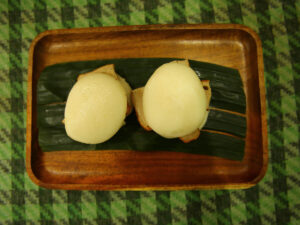
Bánh Giầy Giò
Consists of two pieces of Banh Giay, typically served with Vietnamese sausage (giò chả).

Bánh Giầy Ngọt
Contains a sweet mung bean filling mixed with coconut strands.
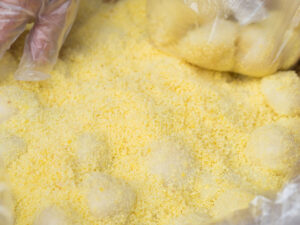
Bánh Giầy Đậu Xanh
Filled with mung bean paste and covered with a layer of finely ground mung beans on the outside.
Continue to the following section for more details about the advantages and disadvantages of this Vietnamese round sticky rice cake.
Pros and Cons of Eating Bánh Giầy
For a detailed view of bánh giầy’s positives and negatives, you should check the table below.
Pros
Cons
Lastly, let’s turn to the following part for extended information about this round, flat rice cake-related inquiries.



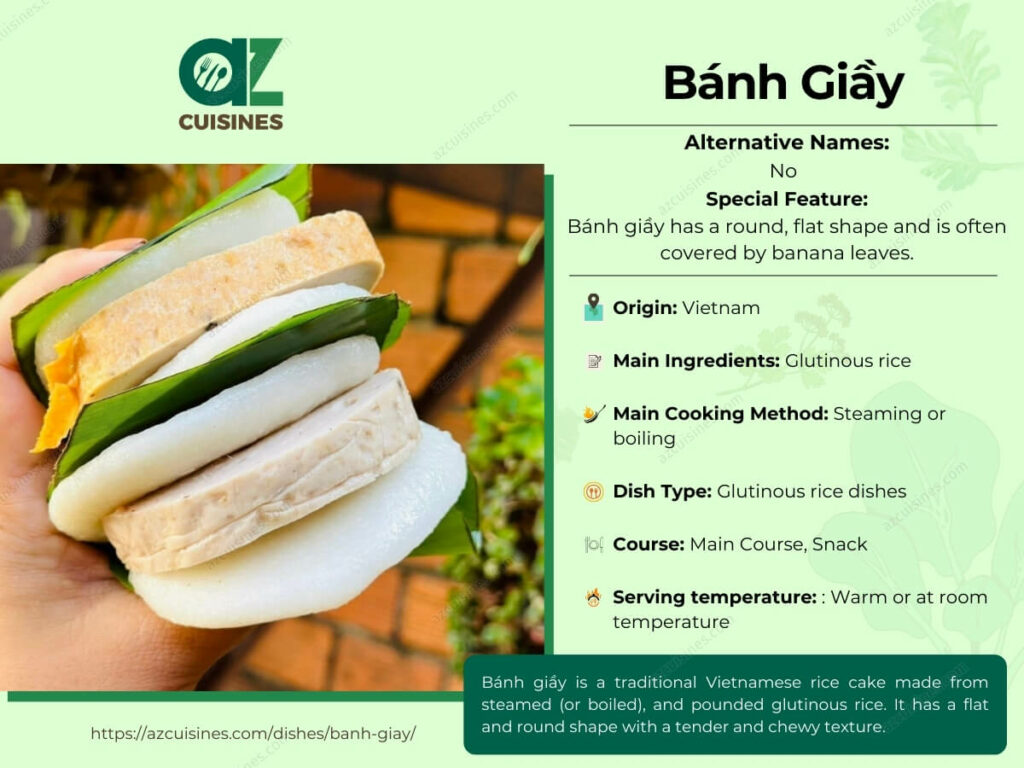
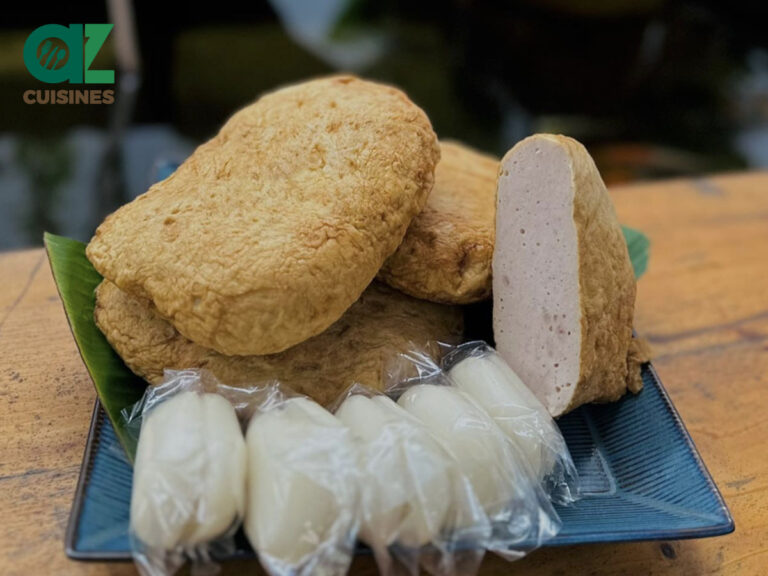
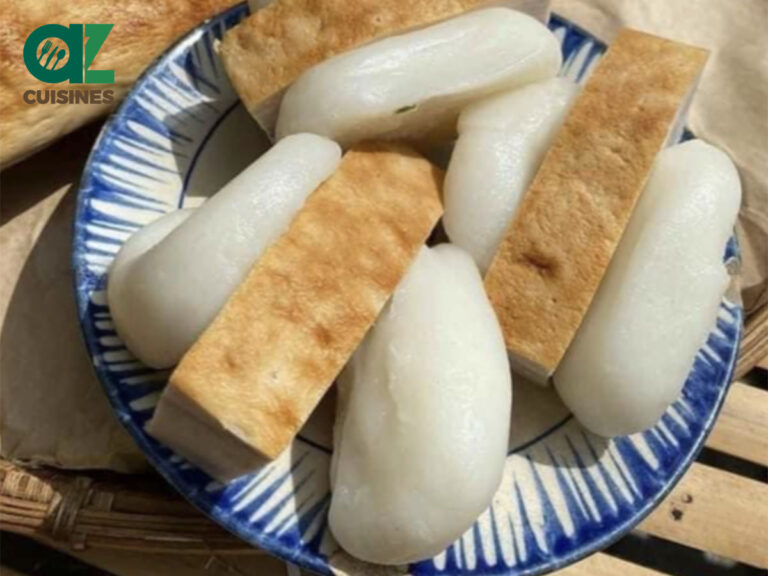
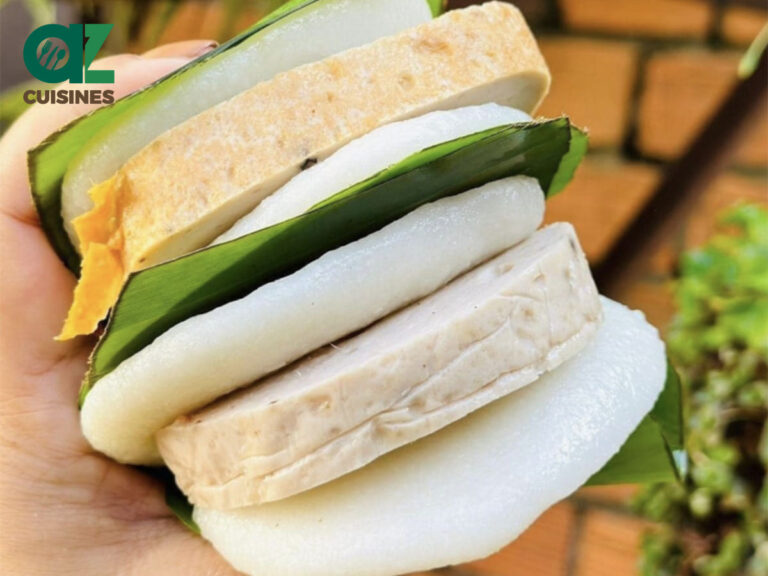
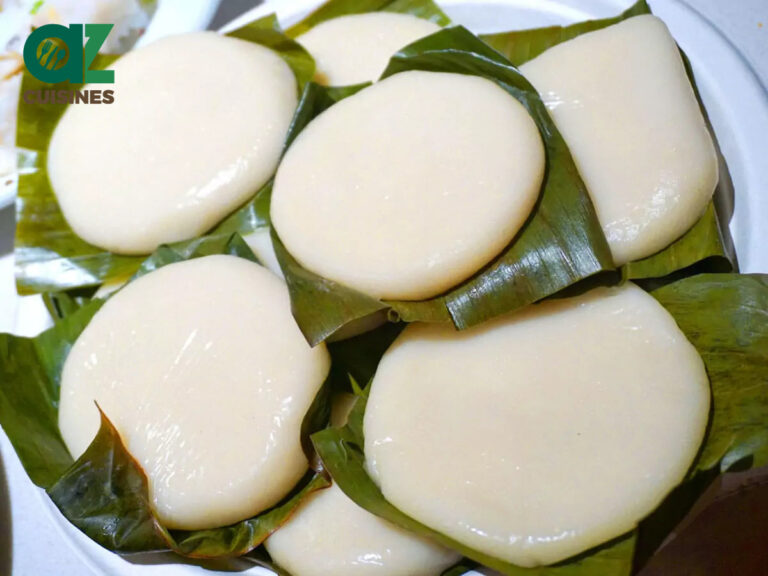
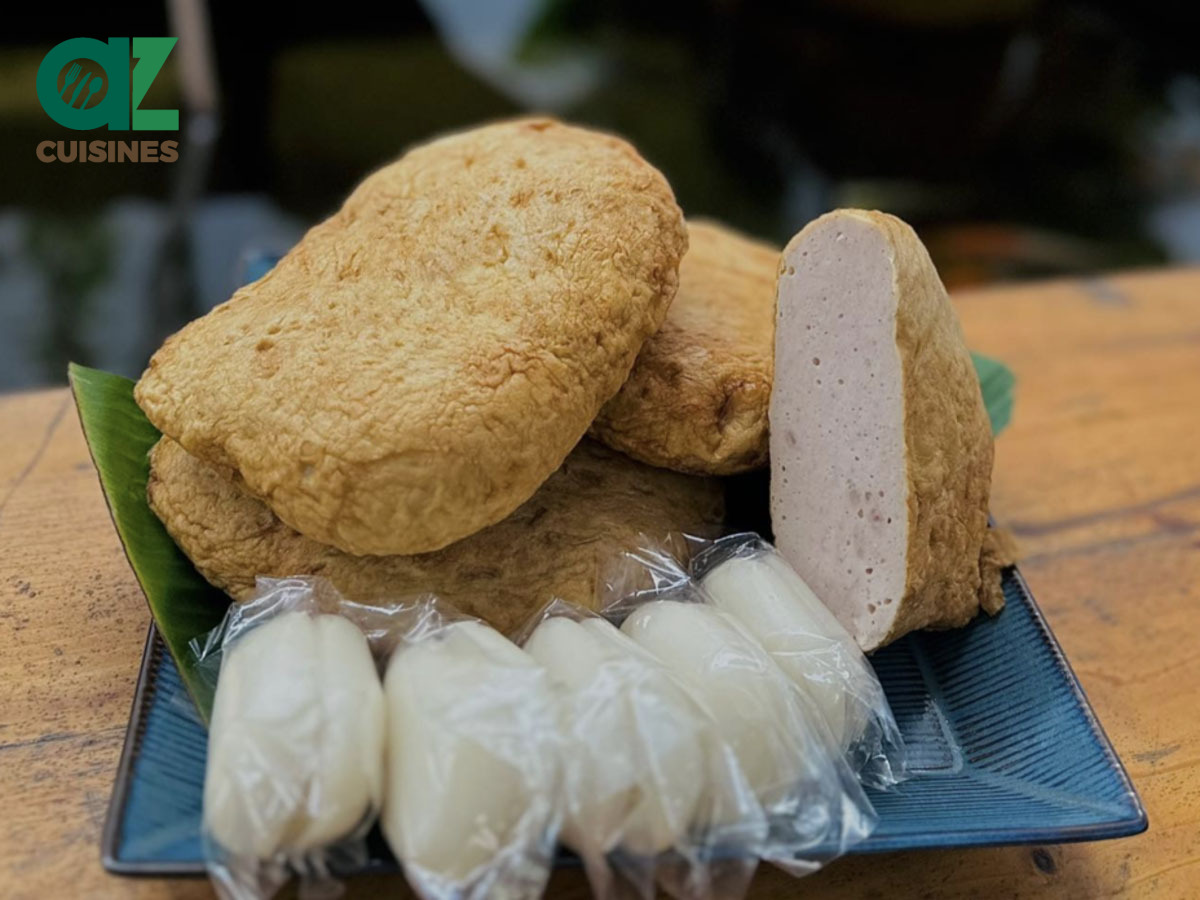


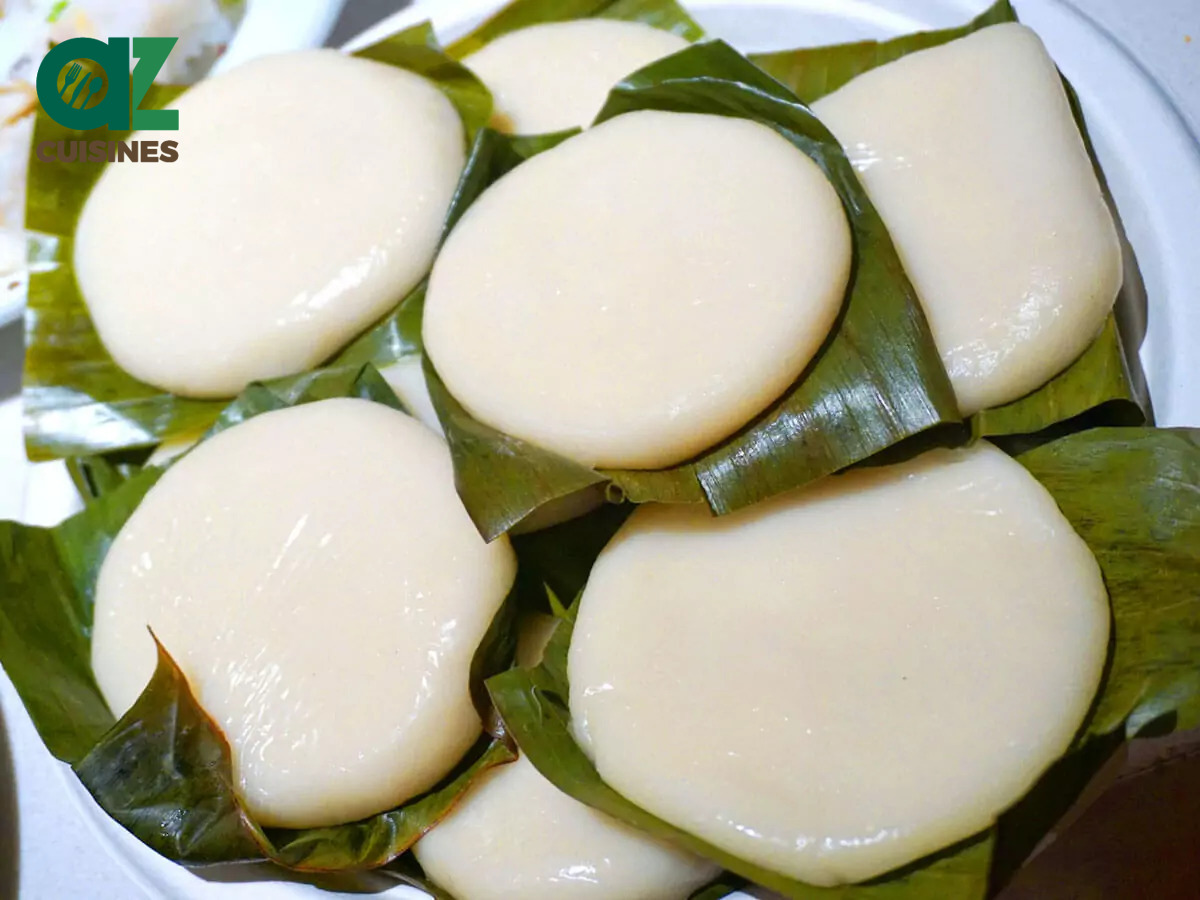
Truc Tran (Kris)
Senior Food Editor
Expertise
Home Cooking, Meal Planning, Recipe Development, Baking and Pastry, Food Editor, Cooking-video Maker, Vietnamese Food Evaluation Expert
Education
Truc Tran (Kris), an experienced food writer and editor, is great at exploring and describing global cuisines, from simple street food to fancy dining. In her writing, she skillfully mixes different flavors, cooking methods, and culinary traditions, showing the unique character of various cultures through their food and drinks. On azcuisines.com, Kris highlights her knowledge, especially in Asian cuisine and worldwide traditional dishes.